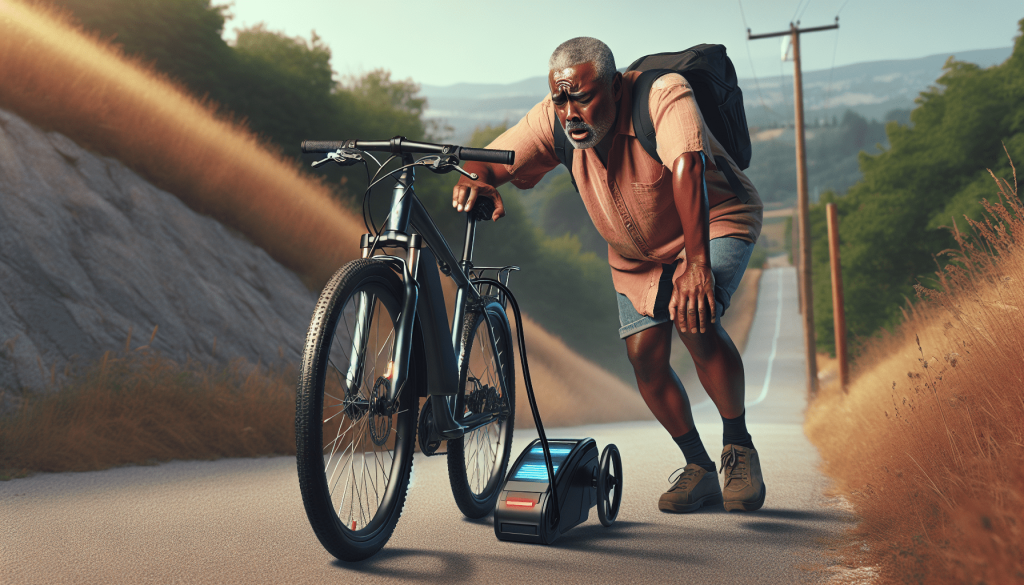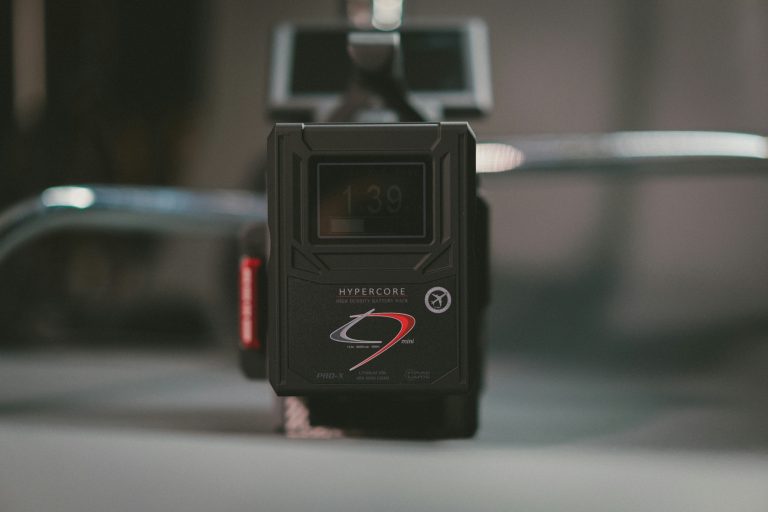What Happens When Ebike Battery Dies?
Imagine you’re cruising along on your electric bike, enjoying the freedom and convenience it offers, when suddenly, your battery dies. Panic sets in as you wonder what will happen next. Will you be stranded? Will you have to push your heavy bike home? In this article, we’ll explore the consequences of an ebike battery dying and share some tips on how to handle this situation with ease. So, let’s jump right in and find out what you can expect when your ebike battery dies.

Loss of Power
Unable to continue riding
When your ebike battery dies, you will experience a sudden loss of power and be unable to continue riding. This can be a frustrating and inconvenient situation, especially if you are far from home or need to reach a specific destination. Without the assistance of the motor, you will have to rely solely on your own physical strength to pedal the bike.
No assist from the motor
One of the major consequences of a dead ebike battery is the lack of assist from the motor. The motor is responsible for providing extra power and making your ride easier and more enjoyable. Without it, you will have to exert more effort to maintain the same speed and overcome any uphill sections or headwinds.
Increased effort required
With the loss of motor assistance, you will need to exert more effort while pedaling. This means putting in more muscle power to move the bike forward. The increased effort can lead to higher heart rate and fatigue, especially on longer rides or challenging terrains. It’s important to be prepared for the increased physical demand on your body when your ebike battery dies.
Reduced Range
Limited distance coverage
When your ebike battery dies, your range will be significantly reduced. Ebikes are designed to cover long distances with ease, but without the motor assistance, you will have to rely solely on your own physical capabilities. This can limit how far you can travel, especially if you are not accustomed to pedaling long distances.
Shorter rides
As a result of the reduced range, the length of your rides will also be affected. You won’t be able to go as far or explore new routes as easily as when your battery is functioning. It’s important to plan your rides accordingly and be aware of your physical limitations when your ebike battery dies.
Recharge Requirement
Need to find a charging point
When your ebike battery dies, you will need to find a charging point to recharge it. This can be a challenge, especially if you are in an area with limited access to charging infrastructure. You will need to map out your route and plan your rides around the availability of charging points to ensure that you can recharge your battery when needed.
Waiting time for charging
Charging an ebike battery can take a significant amount of time. Depending on the battery capacity and charger specifications, it can take several hours to fully charge the battery. This means that you will need to factor in waiting time for charging during your rides, which can be inconvenient if you have a busy schedule or time constraints.
Planning rides around charging availability
With a dead ebike battery, you will have to carefully plan your rides around the availability of charging points. This may require you to modify your routes or even limit your riding distance to ensure that you can recharge your battery when needed. The dependency on power source availability can restrict your freedom and spontaneity while riding.
Alternative Power Sources
Pedaling as the only power source
When your ebike battery dies, you can rely solely on pedaling as the only power source. This means that you will have to put in more effort and rely on your own physical strength to propel the bike forward. While this can be a great workout and an opportunity to improve your fitness, it may not be ideal for longer rides or hilly terrains.
Using a backup battery if available
Some ebikes are equipped with backup batteries that can be used when the main battery dies. If your ebike has this feature, you can switch to the backup battery and continue riding with motor assistance. However, it’s important to remember that backup batteries usually have limited capacity and may not provide the same level of assistance as the main battery.

Weight
Ebike feels heavier without battery assistance
When your ebike battery dies, you will notice a significant increase in weight. The battery itself can add a substantial amount of weight to the bike, and without it, the bike will feel heavier and less maneuverable. This can affect your ability to handle the bike, especially in tight spaces or when making sharp turns.
Maneuverability affected
With the added weight and lack of motor assistance, the maneuverability of your ebike will be affected. It may be more challenging to navigate through crowded areas or negotiate tight corners. It’s important to be aware of these changes in handling and adjust your riding style accordingly when your ebike battery dies.
Slower Speeds
Less momentum from motor
Without the motor assistance, you will experience a decrease in speed when your ebike battery dies. The motor provides an extra boost of momentum, allowing you to maintain higher speeds with less effort. When the motor is no longer operational, you will have to rely solely on your own pedaling power, resulting in slower average speeds.
Decreased average speed
With the loss of motor assistance and the need to pedal harder, your average speed will inevitably decrease. This can be frustrating, especially if you are used to covering longer distances in a shorter amount of time. It’s important to adjust your expectations and be prepared for slower speeds when your ebike battery dies.

Increased Physical Effort
Stronger pedaling required
When your ebike battery dies, you will need to pedal stronger and exert more effort to maintain the same speed and overcome any obstacles. This can be physically demanding, especially if you are not used to pedaling without motor assistance. The increased physical effort may lead to higher heart rate and fatigue, especially on longer rides or challenging terrains.
Higher heart rate and fatigue
With the increased physical effort required, you can expect a higher heart rate and increased fatigue when your ebike battery dies. The added strain on your body can make the ride more challenging and exhausting. It’s important to listen to your body, take breaks when needed, and stay hydrated to prevent overexertion.
Assist Level Switches
Unable to switch assistance levels
When your ebike battery dies, you will be unable to switch between different assistance levels. Many ebikes offer multiple settings to adjust the level of motor assistance based on your preferences or the terrain. However, without a functioning battery, you will be stuck in a particular mode, unable to enjoy the flexibility and customization that comes with different assist levels.
Stuck in a particular mode
The inability to switch assistance levels can limit your riding experience and adaptability when your ebike battery dies. You may find yourself struggling on uphill sections without the extra boost from the motor or not being able to enjoy a leisurely ride with minimal effort. It’s important to be prepared for this limitation and adjust your riding style accordingly.

Reduced Convenience
Frequent charging needed
With a dead ebike battery, you will need to charge the battery frequently to ensure uninterrupted riding. This can be time-consuming and inconvenient, especially if you have a busy schedule or limited access to charging points. The need for frequent recharging can add an extra layer of planning and consideration to your rides.
Dependency on power source availability
Without a functioning ebike battery, you become dependent on the availability of power sources. This means that you will need to plan your rides around the accessibility of charging points or the availability of backup batteries, if applicable. The dependency on power source availability can restrict your spontaneity and freedom while riding.
Battery Replacement or Repair
Cost consideration for replacement
If your ebike battery dies and cannot be revived, you may need to consider replacing it. Battery replacement can be costly, depending on the model and specifications of your ebike. It’s important to factor in this potential expense when deciding whether to replace the battery or explore other options.
Repairing the battery if possible
In some cases, it may be possible to repair a dead ebike battery instead of replacing it. This can be a more cost-effective option, but it depends on the extent of the damage and the availability of qualified technicians. It’s important to explore all options and consult with professionals to determine the feasibility of repairing the battery.
In conclusion, when your ebike battery dies, you will experience a loss of power, reduced range, and the need to find a charging point and plan your rides accordingly. You may have to rely solely on pedaling, which can require more effort and lead to increased physical exertion. The weight of the bike may feel heavier, and slower speeds can be expected without motor assistance. You will not be able to switch between assistance levels and may face reduced convenience due to the need for frequent charging and dependency on power source availability. If your battery cannot be revived, you may need to consider battery replacement or repair, taking into account the associated costs and feasibility. Overall, it’s important to be prepared for these challenges and adjust your riding style and expectations when your ebike battery dies.








